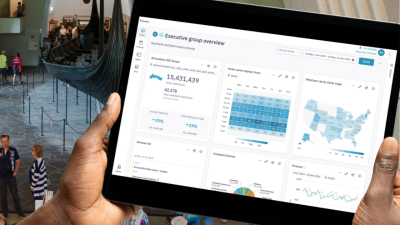One of CFM’s assignments is to encourage museums to innovate, the logic being that if the future is going to be significantly different from the present, museums are going to have to adopt new ways of operating. It’s particularly important for the Alliance to tackle this challenge consciously because it is somewhat at odds with our 100-year+ history of fostering consensus on standards and best practices, and then nudging museums to comply. It’s hard to shift from a message of “emulate the best museums, which all behave this way” to a message of “but feel free to try something different, in case it works better!”
Partnering with EmcArts and MetLife for the past three years on Innovation Lab for Museums has given me plenty of fodder for thought on the nature of innovation, and how one can or can’t encourage it. One of the first things I learned is that people have very, very different ideas about what innovation is, or isn’t and about why or when it is good to innovate. So before you wade into a discussion, it’s good to define what you mean by “innovation.”
Here’s an 10-minute screencast of a presentation I gave to the Accreditation Commission last year, when they asked for a brain dump on innovation & lessons learned to date (which was, in turn, based on a presentation I delivered at NEMA via Skype in 2012.)
The talk presents a classification scheme for “innovations” including:
- Things that are innovative but irrelevant
- Innovations that are successful and important, but don’t catch on
- Things that are cool and new, but not innovative
- Things we think of as innovative, but are not “new”
- Things that may or may not be innovative, depending on the scale you are looking at (big frog/small pond analogy—innovativeness, like size, is relative).
I presume we want to focus on innovation that is relevant (useful), have a support system that will enable them to catch on, are actually advances in practice (and not just shiny new variations on a theme) and (for the Alliance) are important at a national scale.
Based on three rounds of Innovation Lab for Museums applications, museums seem to be most interested in innovating in the areas of:
Markets: how do get different people to care about what we do
Relationships: new ways of interacting with people, or entirely new kinds of interaction
Economies: how to monetize our work in new ways
Experience: how to deliver content in new ways
The presentation ends with a challenge for you to decide for yourself which of 5 museum examples are innovative, or not, using which criteria:
Bring your Baby to the Museum Program: Danforth Museum of Art No tech, no hype—just dedicated mom/baby time. In an art museum.
MOCATV, LA MOCA’s original content YouTube channel, with its associated business model.
The Museum of Old and New Art approach to interpretation: they’ve banned signage from the building, and instead of exhibit labels, provides interpretation via an location-aware app.
Fashion and the Field Museum Collection: an exhibit for which Field Museum of Natural History invited fashion designer Maria Pinto to select objects from the collection to juxtapose with her fashion designs. (If you don’t think it’s revolutionary for a natural history museum to invite a fashion designer to curate an exhibit—well, perhaps you don’t work in a natural history museum.)
Apocolypse Meow: the First International Cat Video Festival, when the Walker Art Center ran a Crowdsourced video festival & awards competition attracting 10,000 entries and over 10,000 attendees. (There has since been a second iteration of the festival—does that count as innovative, too?)
The fundraising scheme for the Nicholas Tesla Museum (which doesn’t exist yet)—raising over $1,370,511 on IndieGogo, a crowdfunding site, reaching their original $800k goal in under a week.
Please weigh in below with your votes & commentary! And share examples of exemplary museum innovation that we could share via this Blog.
Next up in this series: observations on which kinds of museums are pre-adapted to innovation, and the most effective approach to fostering innovation in the museum community as a whole.
Skip over related stories to continue reading article








Hello! Thank you very much for the interesting material!
We are editors of mart-museum.ru, russian online magazine about marketing and technologies for the museums. We are translating your article into russian to give the opportunity to those, who can't read English to get some good thoughts of yours. While translating we couldn't find what is (or who is) NEMA, and as you decide to mention it, we cannot skip it too. Can you help us with that?
Thank you very much!
Dear Nika,
Thank you for contacting me regarding your translation of my blog post for CFM. As the material is copyrighted by the American Alliance of Museums, you have permission for the translation providing that you add the credit line:
“Original English-language version copyright 2013 American Alliance of Museums. To learn more about the Alliance and how to become a member, visit http://www.aam-us.org. To learn about the Alliance’s Center for the Future of Museums, visit http://www.futureofmuseums.org, and subscribe to the CFM Blog at http://www.futureofmuseums.blogspot.com.”
NEMA stands for the New England Museum Association.
Please send me a link to your translation when it is complete. Thank you!
Elizabeth
Dear Elizabeth, tweeted you, but didn't get an answer about subtiutles for the video. Also, I have some more questions. Can I email you? (couldn't find your address)
Nika–you can email me at emerritt@aam-us.org.